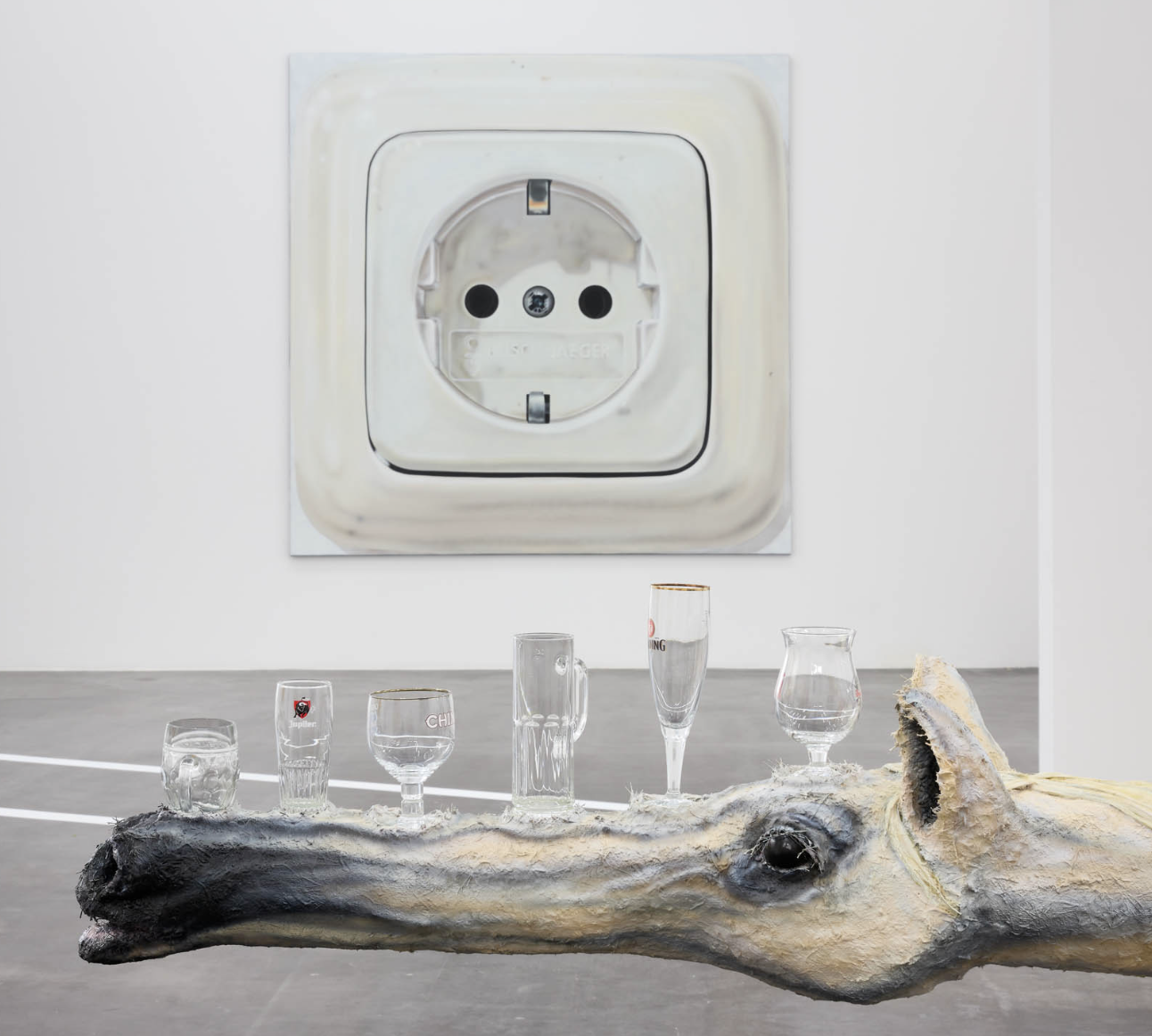JANA EULER | Book Launch & Conversation | Artists Space, New York | April 17


Since the mid-2000s, German artist Jana Euler has produced a heterogeneous body of work that diagrams painting’s social, material, and historical bases. Known for her exacting technique and a cast of characters both real and imagined, Euler “doesn’t break convention,” writes Isabelle Graw, but rather “makes the sometimes-excruciating restraints it imposes visible and explicit, performing a black comedy of accommodation.” Old or new masters—from Leonardo to Duchamp, Georg Baselitz to her Städelschule teacher Michael Krebber—provide Euler with templates that she is free to bloat, vaporize, or otherwise pervert. Pop icons serve as references, too (Ed Sheeran, Whitney Houston), as do animals, whether phallic sharks and slugs or Morecorns, a mythical creature of her own invention. Often treating her subjects with deadpan affect, she renders the familiar inscrutable.
Euler manipulates the conventions of figuration to find new outlets for painterly realism. Houston’s presence in Whitney (2013), for instance, signals Euler’s interest in the social construction of image and taste—in the networks of the art world as well as those of mass culture. The title duly refers to the New York museum which commissioned it for a two-person exhibition, and which appears as a specter abutting the face of the singer. Another series of works in which spray cans or brushes paint themselves allows artist and object to swap roles, skewering the expectations of mastery or control that accompany studio practice. And Euler’s work has long been attuned to the impact of art’s conventions on the body, human and otherwise. The figures in paintings such as Human Size (2014) or Venice void (2022)—or the tangled nudes in her 2020 Artists Space exhibition Unform—contort themselves to fit rectangular frames, as if documenting the biological impact of art’s structures writ large.
Power and institutionality likewise motivate a group of paintings that depict electrical sockets. “For Euler,” notes Catherine Chevalier, “the exhibition is a device for circulating energy.” In solo shows at Kunsthalle Zürich, the Stedelijk Museum, and WIELS in Brussels, such canvases highlight circulation’s often binary framing: on/off, input/output, male/female. Yet, here as elsewhere, Euler ultimately implies power’s dimensionality as not binary but multiple—and often hidden, whether by architectural cladding or art historical myths.

Jana Euler (b. 1982, Friedberg, Germany) lives and works in Frankfurt and Brussels. A solo exhibition of her work is now on view at Greene Naftali through January 10, 2026. Solo exhibitions of her work have been held at the Leopold-Hoesch-Museum, Düren (2024–25); WIELS, Brussels (2024); Greene Naftali, New York (2021); Artists Space, New York (2020); Stedelijk Museum, Amsterdam (2017); Portikus, Frankfurt (2015), and Kunsthalle Zürich and Bonner Kunstverein (2014–15). Significant group shows include the 59th Venice Biennale, The Milk of Dreams (2022); Museum Brandhorst (2023); The Museum of Modern Art (MoMA), New York (2023); Greene Naftali, New York (2023, 2018, 2017); Kunstmuseum Basel (2022); Fondazione Prada, Milan (2021); KW Institute for Contemporary Art, Berlin (2021); Manifesta 13, Marseille, France (2020); Museum für Moderne Kunst, Frankfurt (2019); Tai Kwun, Hong Kong (2019); mumok, Vienna (2018); ICA Miami (2017–18); Musée d’art moderne et contemporain, Geneva (2017); and the Whitney Museum of American Art, New York (2013), among others.
Her work is in the collections of The Museum of Modern Art (MoMA), New York; Aïshti Foundation, Beirut; Hartwig Art Foundation, Amsterdam; Fondazione Sandretto Re Rebaudengo, Turin; Julia Stoschek Foundation, Berlin/Düsseldorf; Kistefos Museum, Jevnaker, Norway; Kunstmuseum Basel; Museum Brandhorst, Munich; Museum Ludwig, Cologne; Museum MMK für Moderne Kunst, Frankfurt; Pérez Art Museum, Miami; Stedelijk Museum, Amsterdam; and Tate Modern, London, among others.